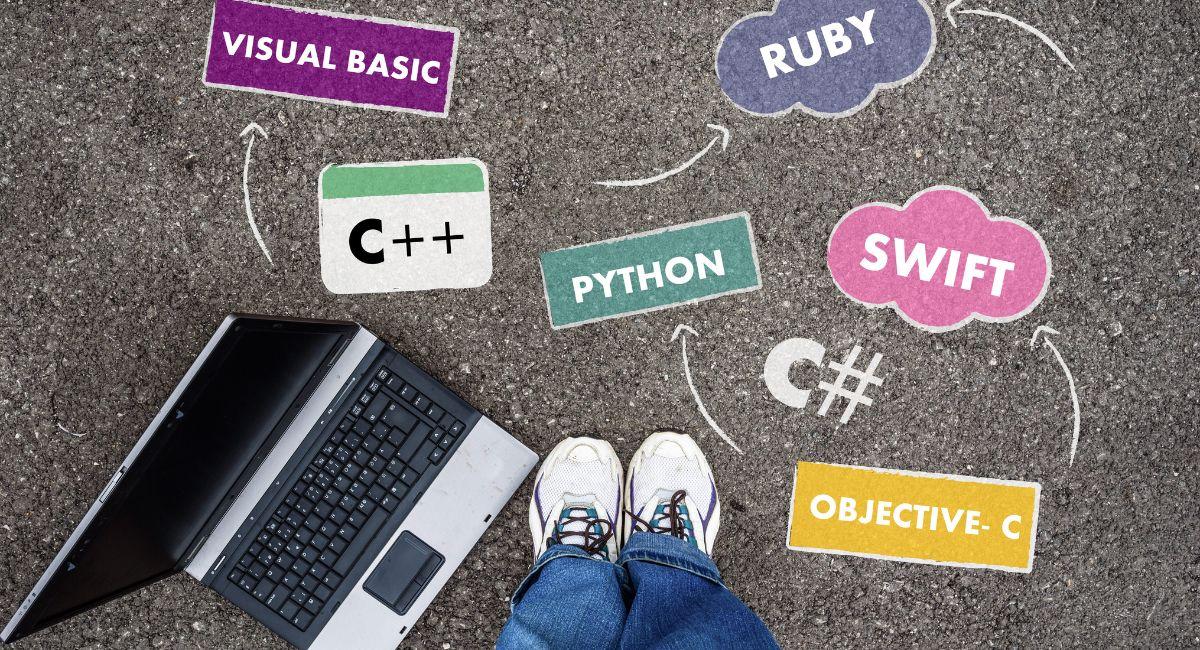January 18, 2024 by Diana Ambolis

In the dynamic realm of blockchain technology, Unique Identifiers (UIDs) play a pivotal role in facilitating various functionalities. A UID is a unique alphanumeric code assigned to each entity on a blockchain, enabling precise identification and tracking. In this article, we explore the top 10 ways to leverage UIDs in blockchain applications, shedding light on their significance and diverse applications.
Understanding UID in Blockchain:
A Unique Identifier (UID) in the context of blockchain refers to a distinct alphanumeric code assigned to each entity within the blockchain network. This identifier serves as a unique label for participants, assets, or transactions, ensuring precision in identification and traceability.
The top 10 ways to leverage UIDs in blockchain applications
1. Decentralized Identity (DID):
Utilizing UIDs in decentralized identity systems enhances the security and privacy of user information. Each user can have a unique identifier, enabling self-sovereign identity management without relying on a central authority. DID systems empower users to control their personal information securely.
2. Supply Chain Management:
Implementing UIDs in supply chain blockchain solutions allows for transparent and traceable product tracking. Each product or component can be assigned a unique identifier, enabling stakeholders to trace its origin, manufacturing details, and distribution history throughout the supply chain.
3. Tokenization of Assets:
UIDs are instrumental in tokenizing real-world assets on the blockchain. Whether it’s real estate, art, or commodities, assigning a unique identifier to each token ensures authenticity and traceability, allowing for seamless trading and ownership transfer on blockchain platforms.
4. Voting Systems:
Leveraging UIDs in blockchain-based voting systems enhances transparency and reduces the risk of fraud. Each eligible voter can be assigned a unique identifier, ensuring that each vote is attributed to the correct participant while maintaining anonymity.
5. Cross-Border Payments:
In the realm of cross-border payments, UIDs simplify the identification process. Assigning unique identifiers to individuals and financial entities streamlines transactions, reduces errors, and enhances the efficiency of cross-border payments on blockchain networks.
6. Medical Records Management:
Securing medical records on the blockchain with UIDs ensures accurate patient identification and data integrity. Each patient can be assigned a unique identifier, providing a tamper-resistant and accessible record of their medical history across healthcare providers.
7. Intellectual Property Protection:
UIDs play a crucial role in the blockchain-based management of intellectual property. Assigning unique identifiers to patents, copyrights, and trademarks ensures accurate ownership records, facilitates licensing, and combats intellectual property infringement.
8. Identity Verification:
In the domain of identity verification, UIDs enhance the efficiency and security of the process. Users can be assigned unique identifiers, streamlining KYC (Know Your Customer) processes while maintaining the privacy and security of personal information.
9. Smart Contracts Execution:
UIDs are integral to the execution of smart contracts on the blockchain. Assigning unique identifiers to participants and assets ensures that smart contracts operate with precision, automating processes such as token transfers, payments, and conditional transactions.
10. IoT (Internet of Things) Integration:
Integrating UIDs with IoT devices on the blockchain enables seamless communication and interaction. Each IoT device can be assigned a unique identifier, facilitating secure and transparent data sharing among devices within the network.
Also, read- Top 10 Versatile Applications Of Social Trust Graphs In The blockchain world
Privacy Considerations in UID Implementation:

The implementation of Unique Identification (UID) systems on blockchain platforms requires careful consideration of privacy concerns, as these systems often involve the handling of sensitive personal information. Privacy-enhancing techniques and cryptographic protocols play a crucial role in ensuring the protection of user data. Here are key considerations and measures for safeguarding privacy in UID implementation on the blockchain:
- Decentralized Identity (DID):
- Self-Sovereign Identity (SSI): Leveraging the principles of SSI allows individuals to have greater control over their personal information. With DIDs, users can manage and share their identity information without relying on central authorities.
- Zero-Knowledge Proofs:
- Privacy-Preserving Authentication: Zero-knowledge proofs, such as zk-SNARKs (Zero-Knowledge Succinct Non-Interactive Arguments of Knowledge), enable users to prove the validity of certain information without revealing the information itself. This enhances privacy during authentication processes.
- Differential Privacy:
- Data Aggregation Techniques: Implementing differential privacy techniques helps aggregate and anonymize data, preventing the identification of individual user data while still allowing for meaningful analysis.
- Homomorphic Encryption:
- Secure Computation: Homomorphic encryption allows computations to be performed on encrypted data without decrypting it. This ensures that sensitive information remains confidential even during data processing on the blockchain.
- Ring Signatures:
- Anonymous Transactions: Ring signatures enable users to sign a transaction on behalf of a group, making it impossible to determine which specific individual initiated the transaction. This enhances privacy by introducing ambiguity in transaction origin.
- Consent Management:
- User-Managed Permissions: Empower users with the ability to manage their consent settings. Users should have control over who can access their identity information and for what purposes, ensuring a transparent and voluntary participation system.
- Off-Chain Storage for Sensitive Data:
- Separation of Sensitive Data: Consider storing sensitive information off-chain to minimize the exposure of personal data on the public blockchain. Hashes or references to off-chain data can be stored on the blockchain for verification purposes.
- Secure Key Management:
- Cryptography for Key Protection: Employ robust cryptographic key management practices to protect private keys associated with UIDs. Secure key storage and transmission are critical to preventing unauthorized access.
- Smart Contract Audits:
- Code Review for Privacy Issues: Conduct thorough smart contract audits, with a focus on privacy-related issues. Ensure that the code adheres to privacy best practices and does not inadvertently expose sensitive information.
- Immutable Audit Trails:
- Transparent Data Access Logs: Implement an immutable audit trail that logs access to information. This provides transparency and accountability, allowing users to monitor who has accessed their data.
- Regulatory Compliance:
- Adherence to Privacy Regulations: Ensure compliance with privacy regulations and standards applicable to the jurisdiction in which the UID system operates. This includes compliance with data protection laws and guidelines.
- User Education and Awareness:
- Informing Users about Privacy Measures: Educate users about the privacy-enhancing techniques and cryptographic protocols employed in the UID system. Transparent communication fosters trust and encourages users to actively participate.
In summary, a privacy-focused approach to UID implementation on the blockchain involves a combination of cryptographic techniques, user-centric controls, and compliance measures. By incorporating these privacy-enhancing measures, developers and administrators can create a secure and privacy-respecting UID system that instills confidence in users and meets regulatory requirements.
Legal Implications of UID Usage:

The usage of Unique Identification (UID) in blockchain applications comes with various legal implications, particularly in the areas of data protection and ownership rights. Here’s an analysis of the key legal considerations associated with the implementation on the blockchain:
- Data Protection Regulations:
- Compliance with Data Protection Laws: Any system must adhere to data protection laws and regulations, such as the General Data Protection Regulation (GDPR) in the European Union or similar laws in other jurisdictions. Compliance includes obtaining informed consent, ensuring data minimization, and providing users with control over their personal information.
- User Consent and Transparency:
- Informed Consent: Users participating in UID systems must provide clear and informed consent for the collection, processing, and storage of their personal data. Transparency regarding how the data is used and shared is crucial for legal compliance.
- Right to Access and Portability:
- User Rights: Individuals have the right to access their data and, in some jurisdictions, the right to data portability. UID systems must facilitate these rights, allowing users to view and obtain their data and, if desired, transfer it to another service.
- Data Minimization and Purpose Limitation:
- Principles of Data Minimization: UID systems should adhere to the principle of data minimization, collecting only the necessary information for the intended purpose. Additionally, data should only be used for the purpose for which it was originally collected.
- Security Measures:
- Data Security: Implement robust security measures to protect UID data from unauthorized access, disclosure, alteration, and destruction. Security breaches can have severe legal consequences, and platforms must take reasonable steps to safeguard user information.
- Ownership and Control of UID:
- User Ownership: Clearly define the ownership and control of UID data. Users should retain ownership of their personal information, and the UID system should not infringe upon their rights. Terms of service should explicitly outline user rights and platform obligations.
- Smart Contract Legality:
- Legal Validity of Smart Contracts: If UID systems involve the use of smart contracts, ensure that these contracts comply with applicable legal standards. The legal validity and enforceability of smart contracts may vary across jurisdictions.
- Cross-Border Data Transfers:
- International Data Transfers: If UID data is transferred across borders, compliance with international data transfer regulations is essential. Some jurisdictions impose restrictions on the transfer of personal data to countries that do not provide an adequate level of data protection.
- Auditability and Compliance Records:
- Maintaining Compliance Records: Keep records of compliance efforts, including audit trails, consent records, and any actions taken to ensure adherence to data protection laws. Having a documented compliance trail is crucial in case of legal inquiries or investigations.
- Legal Counsel Involvement:
- Legal Advice: Seek legal advice from professionals with expertise in data protection and blockchain technologies. Legal counsel can provide guidance on navigating complex legal frameworks, ensuring that systems comply with relevant laws.
- Periodic Legal Reviews:
- Regular Legal Audits: Conduct periodic legal reviews of systems to assess ongoing compliance with changing legal requirements. Regulatory landscapes evolve, and ensuring ongoing adherence is essential to avoid legal risks.
- Liability and Accountability:
- Clear Allocation of Liability: Clearly define liability and accountability in the event of a data breach or non-compliance. Establish mechanisms to address and rectify any legal issues that may arise.
The legal implications of UID usage in blockchain applications require careful consideration and adherence to data protection and ownership rights. By prioritizing compliance with applicable laws, ensuring user consent, and implementing robust security measures, blockchain projects can mitigate legal risks and build trust with users. Legal counsel should be involved throughout the development and operation of UID systems to navigate the complex legal landscape effectively.
<
Top Use Cases for Object Stores
🔹 What are object stores?
Object stores are a type of storage system designed for storing unstructured data as objects rather than files or blocks. Each object contains the data itself, a unique identifier, and metadata. The objects are stored… pic.twitter.com/gn4ySn3rN6
— Sahn Lam (@sahnlam) January 17, 2024
/div>
Blockchain Scalability and UID Management:

Scalability is a critical consideration when managing Unique Identifiers (UIDs) on blockchain networks, especially in large-scale applications. Efficient UID handling is essential for ensuring smooth operation and responsiveness in systems with a high volume of users. Here are strategies and technologies to address scalability challenges associated with UID management on blockchain networks:
- Off-Chain Storage for UID Data:
- Separation of On-Chain and Off-Chain Data: Store UID-related data, especially large datasets or detailed user information, off-chain. On-chain storage is typically more limited and expensive, so off-chain storage allows for more scalable solutions.
- Layer 2 Solutions:
- Implement Layer 2 Scaling Solutions: Utilize Layer 2 scaling solutions, such as sidechains or state channels, to offload some of the UID-related operations from the main blockchain. These solutions can significantly increase transaction throughput and reduce congestion on the main chain.
- Sharding:
- Sharding for Parallel Processing: Implement sharding, where the blockchain network is divided into smaller, independently processed segments or shards. This allows for parallel processing of transactions and can significantly improve scalability by distributing the load across multiple nodes.
- State Channels:
- Off-Chain State Channels: Employ off-chain state channels for related operations. State channels enable users to conduct transactions off-chain while still benefiting from the security of the underlying blockchain.
- Optimized Smart Contracts:
- Efficient Smart Contract Design: Optimize smart contracts to minimize gas consumption and execution time. Efficient coding practices can reduce the burden on the blockchain network and enhance scalability.
- Blockchain Interoperability:
- Interoperability Protocols: Explore interoperability protocols that enable communication between different blockchain networks. This allows UID-related operations to be distributed across multiple blockchains, preventing a single blockchain from becoming a bottleneck.
- Batch Processing:
- Batching Transactions: Consider batching UID-related transactions to reduce the overall number of transactions on the blockchain. This approach can help optimize gas costs and enhance the efficiency of processing.
- Consensus Algorithm Optimization:
- Consensus Algorithm Enhancements: Evaluate and implement consensus algorithm enhancements that improve the speed and efficiency of the blockchain network. Techniques like Proof-of-Stake (PoS) or delegated consensus mechanisms can contribute to faster transaction processing.
- Asynchronous Processing:
- Asynchronous Execution: Implement asynchronous processing for non-critical related operations. This allows the system to handle multiple tasks simultaneously without waiting for each operation to complete before starting the next.
- Caching Mechanisms:
- Use of Caching: Implement caching mechanisms to store frequently accessed data temporarily. Caching can reduce the need to query the blockchain for the same data repeatedly, improving response times.
- Incremental Rollouts:
- Incremental Deployment: Roll out UID-related features incrementally rather than all at once. This allows for better monitoring of the system’s performance and the identification of any scalability issues early in the deployment process.
- Regular Network Audits:
- Performance Audits: Conduct regular audits of the blockchain network’s performance, identifying and addressing scalability issues promptly. Continuous monitoring ensures that the system remains scalable as user numbers grow.
Efficient UID handling in large-scale applications on blockchain networks requires a combination of off-chain storage, layer 2 solutions, sharding, and optimization of smart contracts. The choice of strategies depends on the specific requirements of the application and the underlying blockchain network. By implementing these scalability solutions, developers can enhance the performance and responsiveness of UID management in large-scale blockchain applications.
In conclusion
Unique Identifiers (UIDs) are a cornerstone in unlocking the full potential of blockchain technology across diverse applications. From identity management to supply chain transparency, the precise and unique labeling facilitated by UIDs contributes to the efficiency, security, and transparency of blockchain-based solutions.

